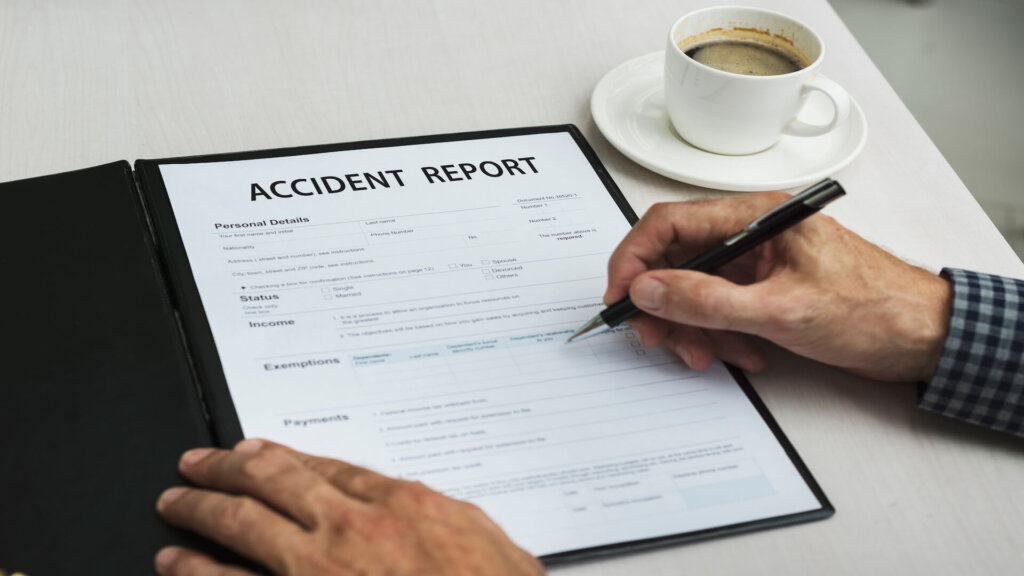If you have been in an accident and you have suffered damages, you can pursue a personal injury claim against the other party if they are to blame for the damages that you suffered. However, you have only a limited time within which to file a claim after the accident.
Each state sets its own laws regarding personal injury claims. Among those laws, there will be a statute of limitations – or a time limit – for pursuing a claim against the liable party after an accident.
Statutes of limitations for pursuing personal injury claims vary significantly from one state to the next. In most cases, you have anywhere from one year to three years after the accident to pursue a claim. However, there could be some leeway depending on the nature of the injury and its severity. For example, if the personal injury claim was because of medical malpractice or medical negligence, you may not realize that you suffered a loss right away.
Regardless of timelines though, it always pays to act quickly when pursuing a personal injury claim. As soon as you realize there is an injury, consult with an experienced personal injury attorney and start gathering documentation and evidence.
The Statute of Limitations
In some states, the statute of limitations for pursuing a personal injury claim can vary dependent upon the nature of the personal injury claim. As an example, claims that involve minors – who are younger than 18 years of age – may be given a longer time for pursuing a claim. Depending on the state, medical malpractice or medical negligence claims may have a longer time frame or a shorter time frame for a claim to be pursued.
In most cases, if a minor has been injured, the statute of limitations does not start until the accident victim has reached the age of 18. An example would be a 16-year-old being involved in an auto accident that left him with a back injury. The state has a two-year statute of limitations for pursuing a personal injury claim. This accident victim’s two-year statute of limitations would not get underway until he reached 18, and he would have two years from then to get a claim underway.
A “discovery of harm” rule may also come into play with your personal injury claim. The statute of limitations often does not start counting down until the accident victim either knows or should have known, that they have suffered an injury and the specifics about the nature of that injury. The discovery of harm often comes into play with medical malpractice cases.
For example, a surgeon accidentally leaves a sponge or some other item inside a patient after the procedure. The patient suffers pain and discomfort years later, and another surgical procedure was needed. It was not determined until the second surgery that the problem originated from the first surgeon’s mistake. That would be the day of discovery and when the clock for the statute of limitations would start ticking.
Apart from these, there are other factors that may operate as an exception in your case, giving you the ability to file a claim at a later period. They include:
- If the person who caused you injury was prosecuted, the limitation period runs up till one year after judgment is pronounced. CCP 340.3. (a). If the act constitutes a serious felony offense, you will have a further ten years after the defendant is discharged from parole to file a claim. CCP § 340.3(b)(1).
- For mesothelioma and other asbestos claims, the plaintiff has one year from the date they first suffered a resulting disability or one year after they found out the disability was caused by exposure to asbestos.
State Laws Regarding Personal Injury Claims
As previously mentioned, each state sets its own laws regarding personal injury claims. You need to familiarize yourself with the laws where the accident took place, so you do not miss the deadline to pursue your claim. If you wait too long, you cannot recover compensation for your damages, and you will have to pay for your losses out of pocket.
For example, Alabama, Arizona, and California all have a two-year statute of limitations. But in Louisiana, you only have one year after the accident. In Maine, North Dakota, and Minnesota, accident victims have six years to pursue a claim, which is the longest allowed in such cases.
Accident victims in Michigan have three years to pursue a personal injury claim, but only one year to pursue a personal injury protection (PIP) claim. Wyoming has a four-year statute of limitations for accident victims to pursue a personal injury claim, but individuals in Tennessee have the shortest time frame in which to pursue an accident injury claim, and that is only one year.
The statute of limitations can become much shorter in some circumstances though. For instance, in personal injury or property damage actions against the government, an administrative claim must be filed within six months of the accident. The government will typically have forty-five days to consider your claim and if they decide not to settle, you will have another six months to file a lawsuit.
Often, the government makes its decision known to plaintiffs via a “rejection letter”, informing the plaintiff they have no intention to pay compensation on the claim. If you do not receive a rejection letter from the government, the limitation period will be extended to two years.
Dealing with limitation periods can be tricky because there may be several factors unknown to you that can affect your claim. As a result, it pays not to cut things too close to the deadline.
What Happens if You Don’t File Within the Time Limit?
Failing to file a lawsuit before the expiry of the limitation period will operate as a bar to recovering compensation. The court will typically refuse to hear such a case if the plaintiff tries to file, except in situations where limited exceptions apply.
The obvious outcome of this is that you will be unable to enforce your right to compensation in a court of law. Where exceptions may apply to your case, it will be necessary to lead legal arguments that show you should be excused in the circumstances.
But proving that exceptions apply to you can be complicated, due to the complex legal rules involved. In many ways, proving that these exceptions apply can feel like a trial in itself as it may sometimes be necessary to hire experts who can help the court understand why you should be excused.
Will the Time Limit Affect an Insurance Claim?
Not exactly. Statutes of limitation generally apply to a plaintiff’s ability to file a personal injury lawsuit. The process of obtaining compensation by filing an insurance claim is different.
However, how quickly you begin the process, and whether your right to file a lawsuit is still intact, can have an effect on your insurance claim. To understand why this is the case, you should know insurance companies work. Insurance companies are run as businesses, meaning it is important for them to increase revenue, profits and keep their shareholders happy.
Even though they are also responsible for helping people who suffer accidents receive the compensation they need to get on with their lives, the primary duty insurance companies have is to their shareholders. As a result, the typical insurance company will do whatever they can to minimize their responsibility to pay on claims or avoid this responsibility entirely.
If you are in a situation where you are pressed for time or have started the personal injury process too close to the limitation period, you risk playing into the hands of insurance companies. Knowing you don’t have a lot of time to sue, they may try to get you to accept low-ball offers or may even attempt to stall your claim so you end up with nothing.
Filing your personal injury claim early and compiling all the important documentation you need can be an important bargaining chip. It also gives you the security of knowing you can pursue a lawsuit to enforce your right to compensation if the insurer is not being cooperative.
Getting Your Personal Injury Claim
The first step in pursuing a personal injury claim is gathering all your supporting evidence and documentation and sending a notice of claim to the liable party and/or their insurer. The demand letter should be itemized and detail all your damages. You will want to add up those losses to get the total value of your claim. A personal injury attorney will be able to determine the value of your losses and will know any pertinent deadlines for getting your claim underway.
Personal injury lawyers understand the claims process and they will create a timeline for pursuing your damages after your accident, and your lawyer will ensure all paperwork is filed in a timely manner and that your claim does not miss any deadlines. Your lawyer will work to ensure that your claim is handled promptly and professionally. Contact Eldessouky Law for a free case review today to determine the best way to proceed with your personal injury claim.








